Top 15 Foods You Should Eat Every Day to Protect Your Liver

The liver is one of the most important organs in the body, playing a key role in detoxification, metabolism, and nutrient storage. It works tirelessly to filter toxins from the bloodstream, process nutrients, and produce bile to aid in digestion. However, the liver can become overburdened due to poor diet, exposure to environmental pollutants, or excessive consumption of alcohol and processed foods. Over time, this strain can lead to liver damage, inflammation, or even conditions like fatty liver disease, cirrhosis, or liver cancer.
Fortunately, you can take proactive steps to protect your liver and keep it functioning at its best by incorporating certain foods into your diet. These liver-friendly foods help the liver perform its job more efficiently and protect it from damage. They're packed with antioxidants, vitamins, and minerals that support detoxification, reduce inflammation, and prevent fat buildup in the liver. From leafy greens to healthy fats, the foods on this list will not only benefit your liver but also contribute to overall health and well-being.
Leafy Greens
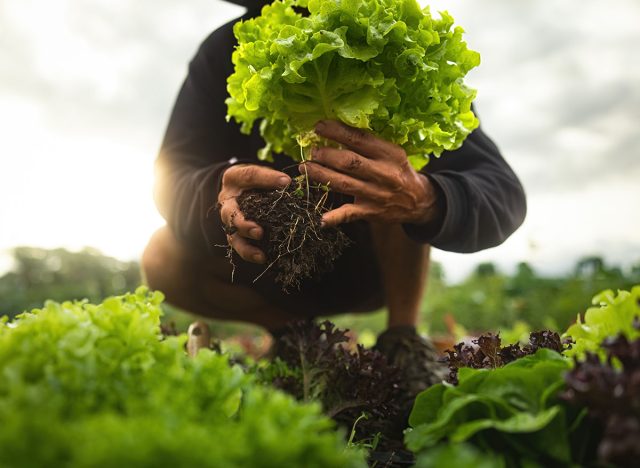
Leafy greens like spinach, kale, and arugula are high in antioxidants and chlorophyll, which help detoxify the liver. These greens neutralize heavy metals and chemicals, promoting better liver function. "Vitamin K can be important for your liver function to make sure that you have the right materials to make your clotting factors," liver specialist Christina Lindenmeyer, MD, tells the Cleveland Clinic. "Things like leafy greens and spinach are high in vitamin K and can be a benefit."
Garlic
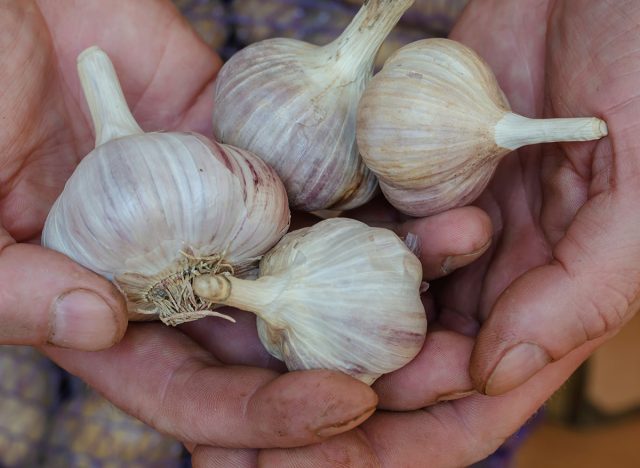
Garlic activates liver enzymes that help flush out toxins from your body. It's also rich in selenium, a mineral known to boost antioxidant action in the liver.
RELATED: 20 Superfoods for People Over 50
Avocados
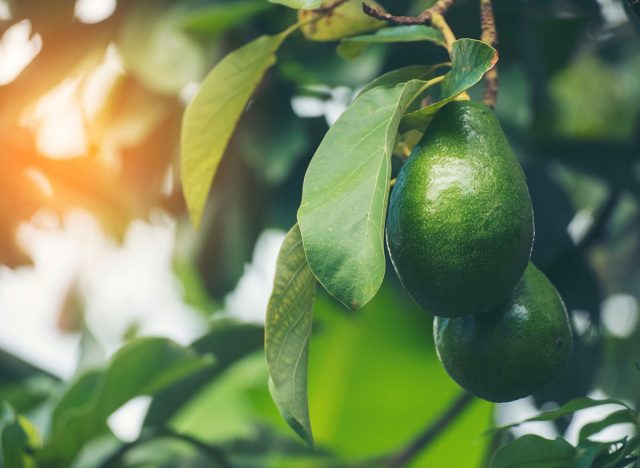
Packed with healthy fats and nutrients, avocados have been shown to reduce liver damage. Their glutathione content helps the liver detoxify harmful substances.
Turmeric

Turmeric is known for its anti-inflammatory properties, and it helps increase bile production, assisting the liver in eliminating toxins. The curcumin in turmeric also reduces oxidative stress on the liver.
Fatty Fish
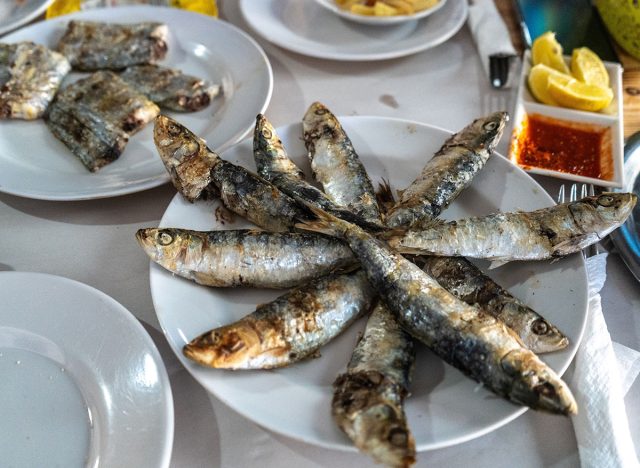
Fish like salmon, sardines, and mackerel are rich in omega-3 fatty acids, which help reduce liver inflammation and prevent fat buildup that can lead to liver disease. "Oily fish and its fatty acid intake showed a preventative benefit for NAFLD and metabolic dysfunction-associated fatty liver disease, especially in South Korean women," says one study.
Beets

Beets contain betaine, which supports liver detoxification and reduces oxidative stress. Beets also help the liver break down fats more efficiently.
Walnuts
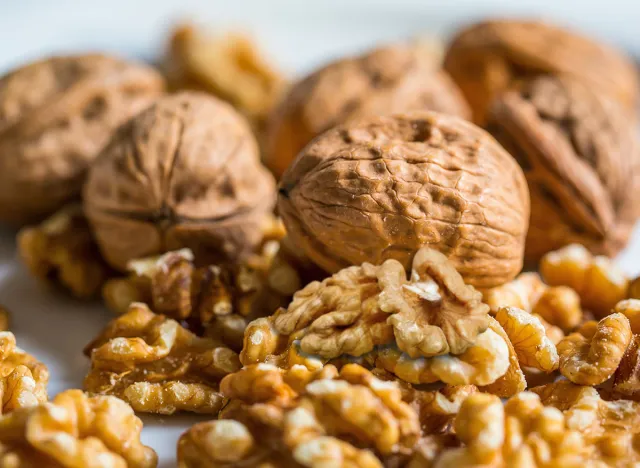
Walnuts are high in omega-3 fatty acids and glutathione, which help the liver cleanse itself from ammonia and detoxify fat-soluble waste products. "Nuts are also very high in protein," adds Dr. Lindenmeyer to the Cleveland Clinic. "If you have advanced liver disease or are struggling with muscle loss related to your liver problems, it can be helpful to eat a gram of protein (or more) for each kilogram of your body weight each day." protein daily.
RELATED: I Lost 40 Pounds in 4 Months Without Exercise Using Unusual but Effective Tricks
Green Tea
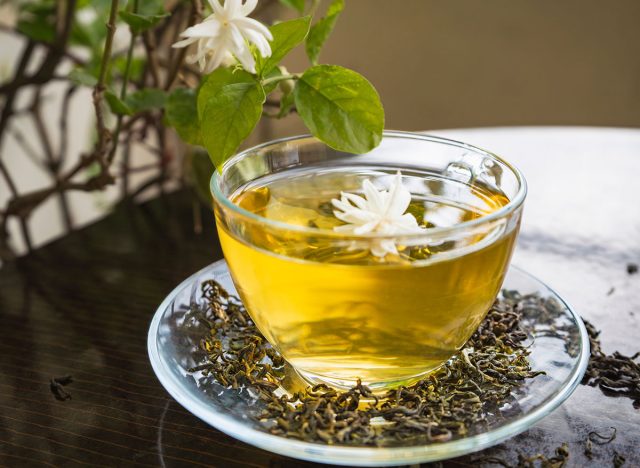
Green tea is rich in catechins, a type of antioxidant that supports liver function. Studies have shown that regular consumption of green tea can reduce liver fat and inflammation.
Grapefruit
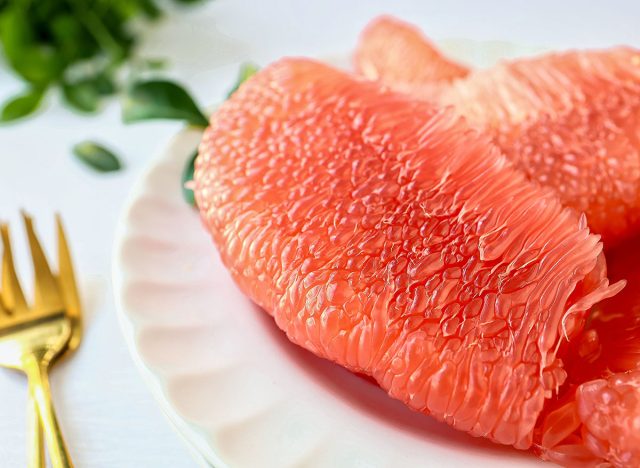
Grapefruit is packed with antioxidants like naringenin and naringin, which help protect the liver from injury by reducing inflammation and promoting liver cell repair.
Apples
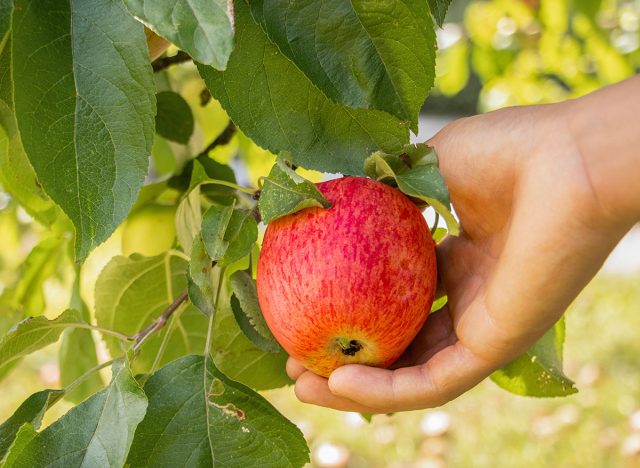
The high pectin content in apples helps bind toxins and supports liver detoxification. Apples also help regulate cholesterol levels, reducing liver strain.
RELATED: The Best Pre-Workout and Post-Work Meals for Burning Fat
Broccoli
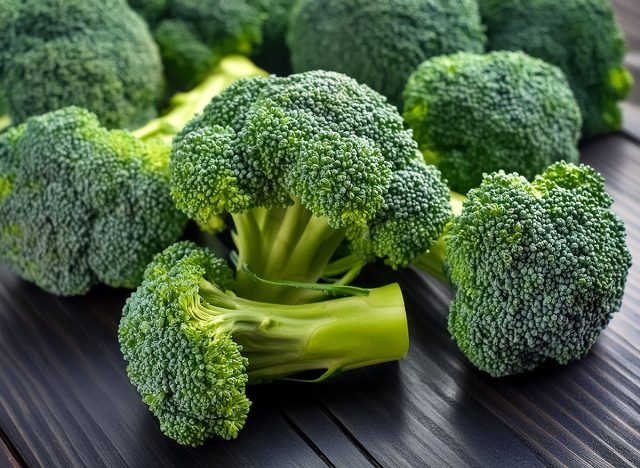
Cruciferous vegetables like broccoli enhance liver detox enzymes and improve the body's ability to eliminate carcinogens and other harmful toxins.
Olive Oil
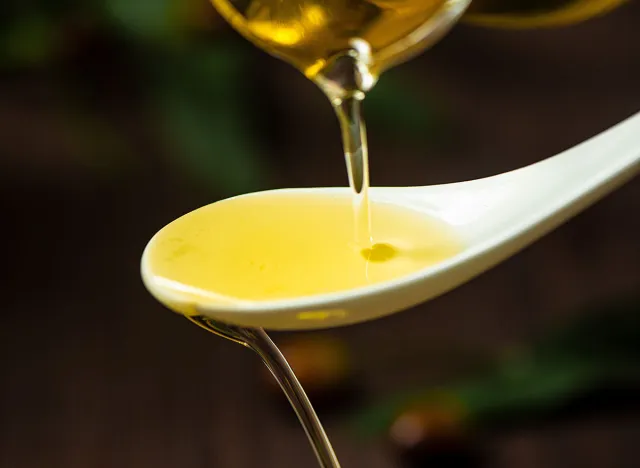
Extra virgin olive oil provides healthy fats that help the liver process toxins. It reduces fat accumulation and improves insulin sensitivity, which helps protect the liver. "A Mediterranean diet is a popular example of a healthy, balanced diet. It has a focus on foods that come from plants and is low in meat and dairy products. For example using olive and other plant oils instead of butter. It also includes plenty of vegetables, fruits, nuts and fish," says the British Liver Trust.
Lemons

Lemons are high in vitamin C and help the liver produce more enzymes to aid in digestion and detoxification. Drinking lemon water can improve liver health over time.
RELATED: I Lost 45 Pounds and Transformed My Dad Bod by Walking More and Lifting
Berries
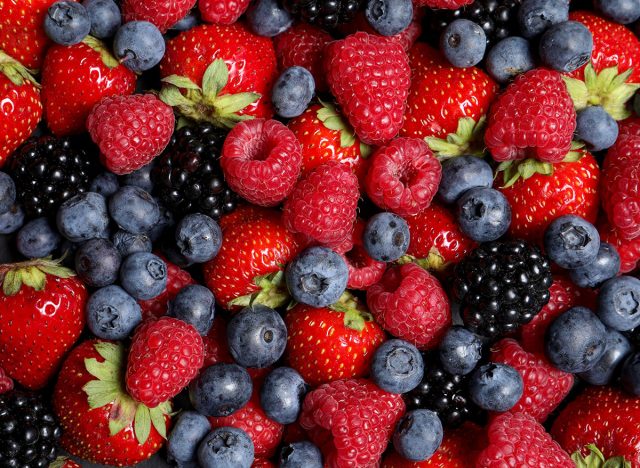
Berries like blueberries, raspberries, and strawberries are rich in polyphenols and antioxidants, which protect the liver from oxidative stress and inflammation. "Antioxidants are compounds that protect and reduce the effects of inflammation on the liver," says Dr. Lindenmeyer to the Cleveland Clinic. "There's a lot of anti-inflammatory antioxidants in fruits like blueberries."
Carrots
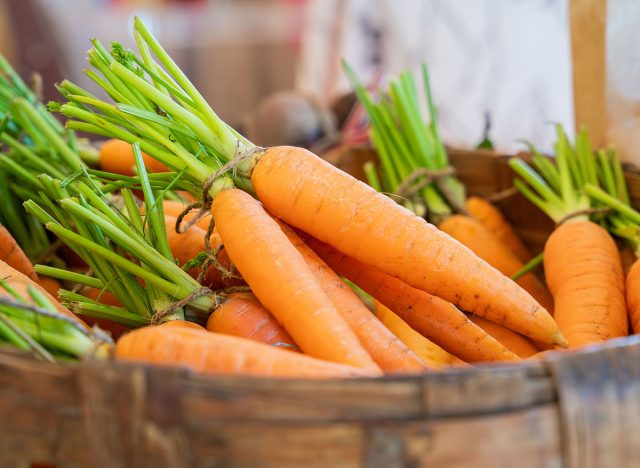
Carrots are rich in beta-carotene, which the liver converts into vitamin A. This nutrient is essential for reducing liver inflammation and promoting overall liver health. And if you enjoyed this article, take advantage of these 15 Quick Ways to Lose Body Fat Percentage in a Week.




